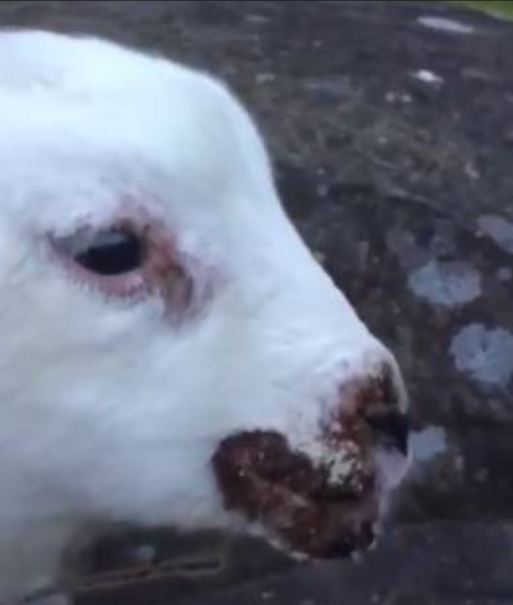Spring is the most common time for an Orf outbreak to occur and here vet Frank O’Sullivan details the necessary steps required to reduce the likelihood of an outbreak on your farm.
1. Identifying Orf in your flock
Orf is a very painful condition of sheep, which causes scabby lesions around the nose, the inside and outside of the mouth and on other parts of the body including the feet.
In the case of nursing ewes, the teats can also be affected. The inclement spring weather has caused animal and flock stress, which has provided a major opportunity for the Orf virus to multiply.
These thick, brown scabs can bleed easily and affect the lamb’s ability to eat and suckle. And, as a result weight loss is more than likely to follow.

Lamb showing visible signs of an Orf outbreak.
2. How does Orf spread?
Spring is the most common time for Orf to affect the sheep flock. The virus multiplies where the skin of the sheep has been damaged by a cut or even a graze.
Thistles or rough food can be enough to damage the skin and allow the virus entry to the vulnerable areas, triggering an Orf outbreak.
Normally, the Orf lesions last for four-to-six weeks before eventually disappearing.
However, it is not unusual for a secondary bacterial infection to take hold. Affected lambs may not be as keen to suckle from the ewe and therefore lose weight and die.
Of course, the ewe can develop the infection on her teats and may not allow the lamb to drink. These ewes are also prone to developing secondary mastitis.
Infected lambs will then try to suckle other ewes and this could lead to the disease spreading to other sheep in the flock.
Video: Young lamb showing signs of an Orf infection
3. Treatment and Prevention
A new outbreak always seems to be more severe than a long-standing Orf problem, which is understandable, as immunity levels are low in a group of sheep that suddenly come in contact with the disease.
There is no real treatment other than emollient creams and if necessary antibiotics for secondary infections.
Since the scabs that form during an Orf infection are full of virus the biggest source of infection from one lambing season to the next is from the scabs that are shed from infected animals as they heal.
Although, the virus in the scabs will not survive a winter outside, in damp conditions it can persist in dry buildings for many years.
Cleaning and disinfecting buildings, particularly if they are used for lambing, is important to control Orf.

Lamb showing signs of Orf (front) and lamb without Orf (back)
4. Vaccination key to stopping an Orf outbreak
A vaccine is available (on special licence by prescription from your veterinary practitioner) which will help protect the flock against Orf. As this is a live vaccine it should only be used in flocks where Orf infection is already present.
This vaccine is administered to lambs and ewes via a single scratch in the axilla (between the top of the foreleg and the chest wall) using the special vaccine applicator.
Ewes should be vaccinated at least seven weeks before lambing for best effect.
Vaccinated ewes should be kept away from the lambing areas for at least seven weeks to prevent contamination, as Orf scabs are formed at the vaccination site. These scabs die and fall off the pregnant ewes during this time, which poses a risk to unvaccinated sheep.

5. Orf can cause a nasty skin disease in humans
Orf is a zoonotic disease, which means that it can be passed from animals to humans.
And, as a result farmers and vets should take particular care when handling sheep with Orf as it can cause a nasty skin disease in humans.
Wearing gloves together with good hygiene is essential. It is also recommended to take appropriate care when using the Orf vaccine, as it contains the live Orf virus.
Pictures and video compliments of Frank O’Sullivan, who practises with Patrick Farrelly and Partners in Co. Meath.

